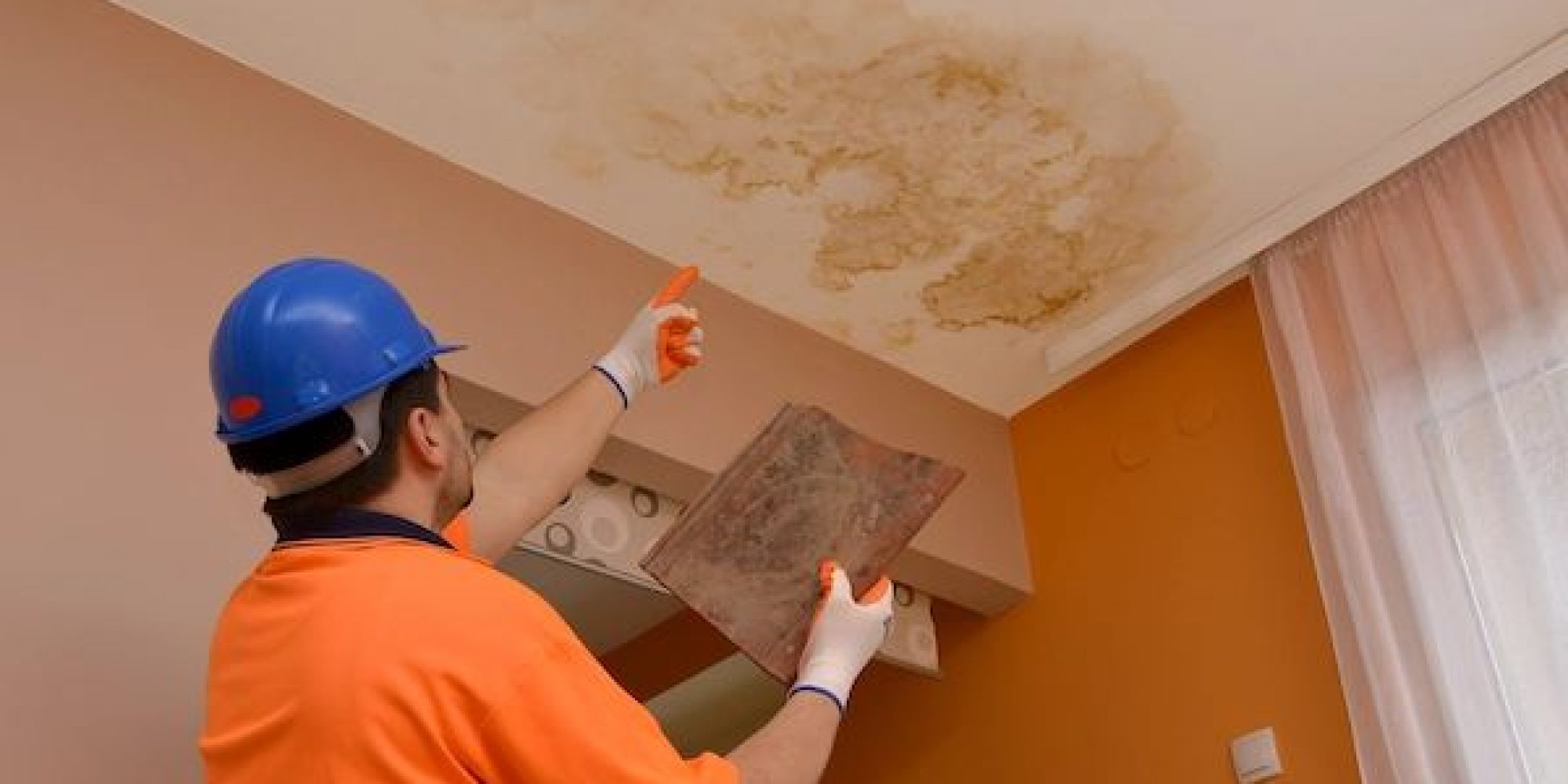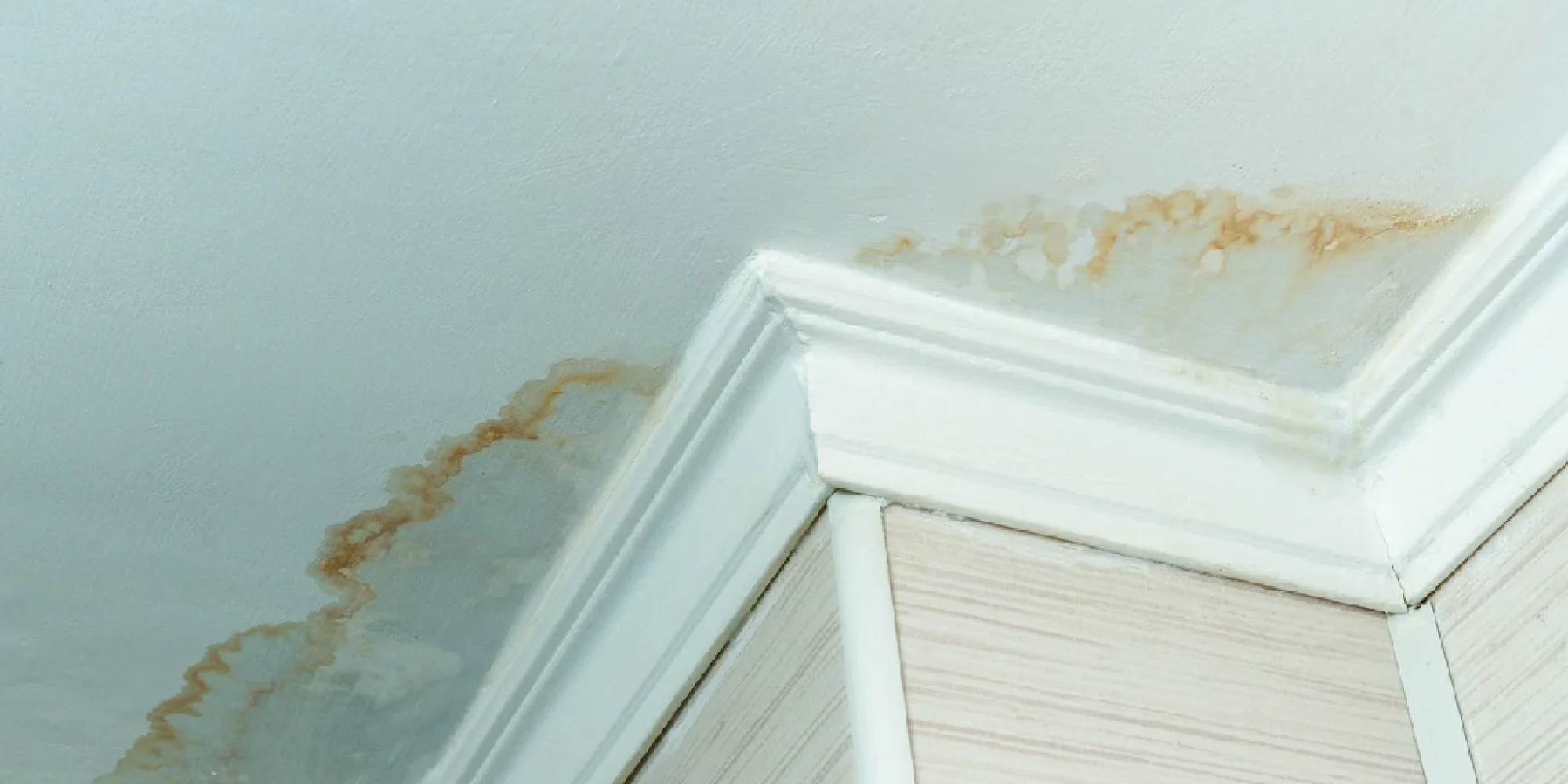If you’ve noticed a wet patch or stains forming on your downstairs ceiling, especially below a bathroom, it’s a warning sign you shouldn’t ignore. Water leaks often start small but can lead to serious structural damage, mold growth, and costly repairs if not handled quickly.
Here’s how to find out what’s causing the leak, what to do immediately, and how to prevent it from happening again.
How to Identify a Leak Coming from an Upstairs Bathroom
Look for these signs:
Yellow or brown stains on the ceiling below the bathroom.
Peeling paint or bubbling plaster.
Damp smell or visible mold near light fixtures or corners.
Soft spots or sagging drywall on the ceiling.
Dripping water during or right after someone showers upstairs.
If any of these are present, it’s time to start investigating.


The Most Common Causes of Ceiling Leaks
1. Plumbing and Pipe Issues
One of the most frequent causes is a leaky water supply or drain pipe. Over time, connections loosen, or pipes corrode, allowing water to escape slowly into the ceiling cavity.
Tip: If the leak happens continuously—even when the bathroom isn’t used—it’s likely a supply line problem.
2. Shower or Bathtub Seals
Cracked caulking or grout around the tub or shower lets water seep through walls and flooring. The moisture eventually reaches the ceiling below, creating hidden damp spots.
Prevent it: Reseal shower edges every 12–18 months using waterproof silicone.
3. Toilet and Drain Leaks
A loose toilet base, damaged wax ring, or blocked drain can send small amounts of wastewater under the floor. You might not see it until the ceiling below starts to discolor.
4. Condensation and Ventilation Problems
Bathrooms without proper ventilation trap humidity. Over time, that moisture can collect on cold surfaces—like metal pipes or ceiling joists—causing dripping that mimics a leak.
How to Check Where the Leak Is Coming From
Turn off the bathroom water supply.
Check if dripping continues; if yes, it’s likely a drain or condensation issue.Test fixtures one by one.
Flush the toilet, run the sink, then the shower—watch for ceiling moisture after each.Use a moisture meter or infrared thermometer to detect hidden damp spots behind drywall.
Cut a small inspection hole (if safe) to trace the direction of the water source.
Always dry the area completely before sealing it up again—trapped moisture causes mold fast.
What to Do Immediately to Minimize Damage
Shut off the water supply to the bathroom.
Contain the leak using a bucket or plastic sheet.
Turn off electricity if water is near lights or outlets.
Ventilate the area to reduce humidity and prevent mold.
Document the damage with photos for insurance claims.
Long-Term Repair Tips to Prevent Future Leaks
Replace old pipes or corroded fittings.
Apply waterproof membrane or vinyl flooring under the bathroom tiles.
Seal joints with high-quality bathroom silicone.
Ensure bathroom exhaust fans vent outside, not into attic spaces.
Inspect plumbing yearly for early warning signs.
When It’s Time to Call a Professional
If you see persistent dripping, ceiling bulging, or suspect structural or electrical risks, contact a qualified plumber or water damage specialist immediately. Even a small leak can cause hidden rot, which weakens floor joists and ceiling framing.
References
No—leaks never fix themselves. Even if dripping stops, moisture likely remains trapped, leading to mold or rot.
Most policies cover sudden, accidental leaks (like burst pipes), but not long-term neglect. Always report issues early.
With fans and dehumidifiers, small areas may dry in 48–72 hours; larger leaks can take a week or more.
